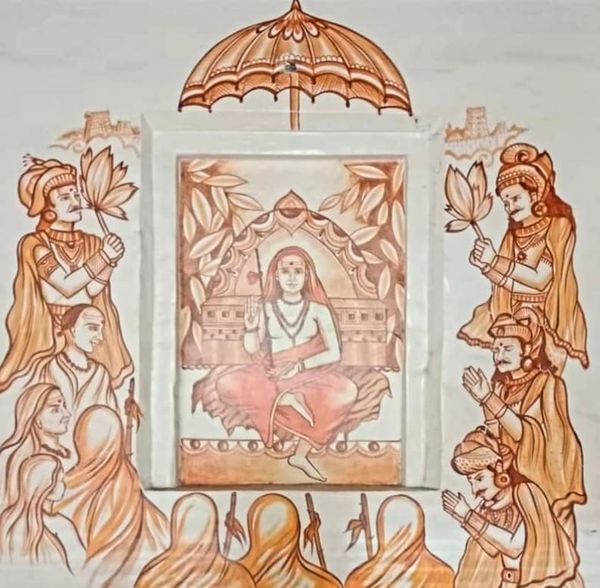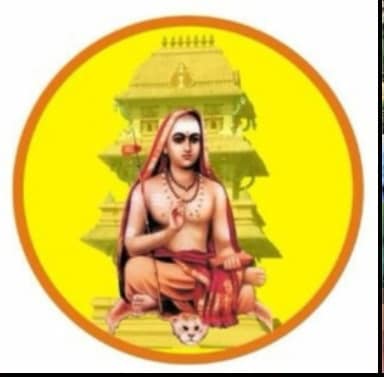His Holiness Jagadguru Shri Jayendra Sarasvati Swamiji of Shri Kanchi Kamakoti Peetam with the Jagadguru of Shri Govardhan Peetam, Puri, at the Conference of all Religions held in Puri Kshetra from 1st to 5th December, 1974.
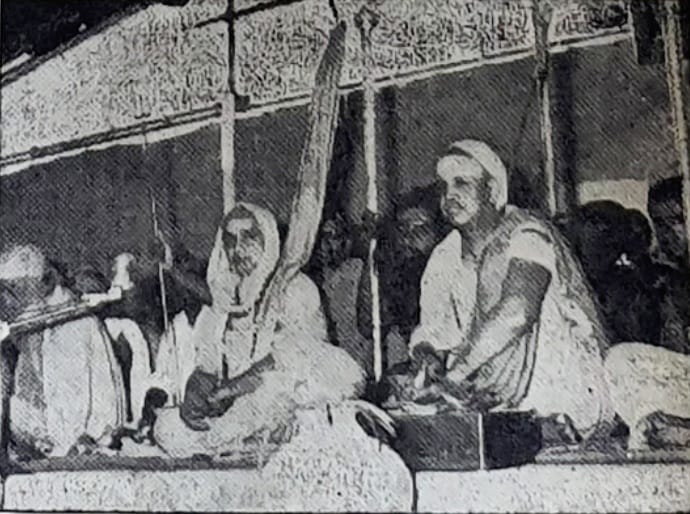
His Holiness Jagadguru Shri Jayendra Sarasvati Swamiji of Shri Kanchi Kamakoti Peetam with the Jagadguru of Shri Govardhan Peetam, Puri, at the Conference of all Religions held in Puri Kshetra from 1st to 5th December, 1974.

Sectarian Conflict at Jagannath
According to the Madala Panji, the historical chronicles of the Jagannath temple, the images Shri Shnkaracharya a and Shri Padmapada were also placed on the Ratnasimhasana of Jagannatha and regularly worshipped until the reign of Raja Divyasimha Dova of Khurda (1787-1793 C.E).
However, at a later time, they were relocated from that position and unfortunately vandalized by members of another sect. Some say that the image of Bhairava, placed near the deity was removed by the person belonged to another sect who was in charge of Administration of the temple . The efforts made by local Advaita mathas to address this issue were not entirely successful, but they were able to partially maintain their rights within the temple.
Despite these sectarian conflicts, it is noteworthy that the royal dynasty of Odisha continued the tradition of granting access to the Shankaracharyas of the FIVE Mathas to reach the Ratna Simhasana of Shri Jagannath and perform worship in accordance with the established customs.
Sacred Honors to FIVE Shankara Mathas in Puri Jagannath Temple… 2
In Puri, apart from the Govardhana Matha, there are four other Mathas: They are, Sankarananda Matha, Sivatirtha Matha, Gopala Tirtha Matha and Mahiprakasa Matha. The first three are supervised by dandi Sanyasis, while Mahiprakasa Matha is a Brahmacari Matha.
The Chamu Chitau – Royal Records
According to a historical record found in Chamu Chitau, Maharaja Bir Kishore Dev of Puri issued specific instructions regarding the privileges to be observed in the Jagannath Temple during the visit of the Shankaracarya of Govardhana Peetha. These instructions granted the Pandits of Govardhana Matha, Sankarananda Matha, Sivatirtha Matha, Gopalatirtha Matha, and the Brahmacharis of Mahiprakasa Matha the right to approach the Ratna Simhasana of Jagannath Purushottama Mahaprabhu.
On the 7th day of the Karkataka month, in the 14th year of his reign, Maharaja Bir Kishore Dev of Puri, Orissa, sent a communication to the Manager of the Purushottama (Jagannatha) temple. This letter provided detailed instructions regarding the honors to be accorded to the Acaryas of the FIVE Shankaracarya Mathas.
This correspondence briefly conveys the Maharaja’s order to the responsible officer in charge of the Jagannath Temple in Puri. This order directed the officer to make appropriate arrangements for the darshan of Sri Jagannatha when the Shankaracaryas of the FIVE Mathas visit Puri for darshan. This Ancient Royal Record underscores the Royal Honors given to the FIVE Shankaracharya Mathas, highlighting their importance.
The reason why the Orissa Royal House, Puri Jagannath Temple Authorities, and Pandits of Utkala Desha acknowledged all the FIVE Mathas instead of the four is a question that specifically awaits an answer from mathamnaya theorists.
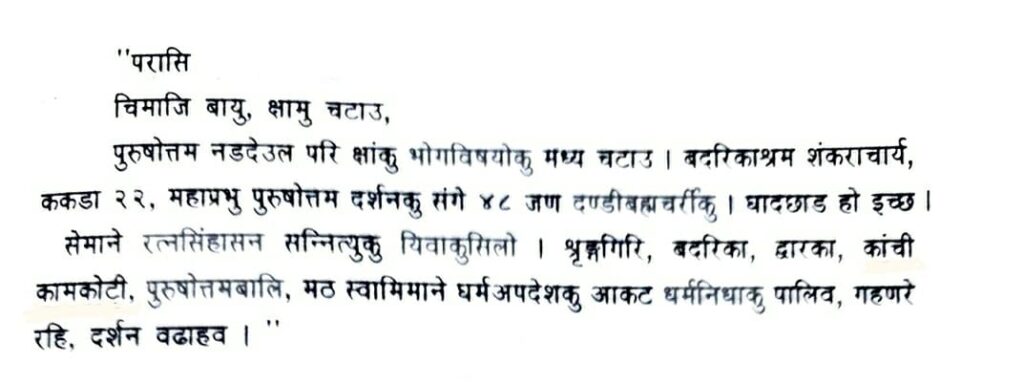
The Madalapanji, palm-leaf Odia chronicles of Jagannath temple in Puri, holds immense historical importance, not only for its comprehensive account of Odisha’s traditional history but also for the significant status it attributes to the Mathas established by Pujyashri Shankara Bhagavatpadacharya within the Temple’s historical framework.
This ancient record is comparable to Srirangam & Kanchipuram Kovil-Ozhugu and Sritala Pustaka & sthanikar varalaru of Madurai Temple of Tamilnadu.
Written annually, the Madalapanji was meticulously maintained by the Karanas, the official history writers of Puri. The ritual of updating the chronicle on Vijaya Dashami day serves as evidence that the tradition began with Odia king Anantavarman Chodaganga Dev himself.
It is said that 24 Karana families were engaged to safeguard these records of Puri Temple, with five specifically assigned to the writing and preservation of the Madalapanji. These designated Karanas include –
Panjia Karan (preserver)
Tadau Karan (writer)
Deula Karan (enforcer)
Kotha Karan (main compiler), and
Baithi Karan (assistant).
Raja Ramachandra Dev’s order in respect of the Traditional Honours shown to the Five Shankaracharya Mathas :
Within the Madalapanji, an intriguing mention can be found regarding the honors bestowed by Raja Ramachandra Dev upon the five Shankaracharya Mathas. This particular reference underscores the significance attributed to these mathas within the temple’s historical context.
According to Shri Sadashiv Rath, in leaf No.7 of Bundle No.3 in Dwarakanath Pattjiatri Mahapatra’s Private Library, reference is made in it to honours ordered by Raja Ramachandra Dev to the five Shankaracharya Mathas – Shri Kanchi Kamakoti, Badarikasrama, Dwaraka, Sringeri and Puri Govardhana Mathas. (1/2)
Sri Avani Sringeri Matha,
Avani Kolahalapuri Kshetra
Sri Abhinavoddanda Vidyashankara Bharati Swami
Date of Birth: 01-11-1908
Date of Sanyasashrama : 02-05-1928
Image Vijnapana Patrika submitted to Sri Abhinavoddanda Vidyashankara Bharathi Swami of Sri Avani Sringeri Matha, who presided over the Seventh Sammelana of the Agama-Traya Mahamandala by the Adyaksha, upa-adyaksha and participants on August 22, 1956 in Bangalore.
//… Śrī śrīgaḷavaru nam’ma sansthānada suprasid’dha kṣētragaḷallondāda kōlāhalapurī kṣētra (kōlāra) dalli janmatāḷi atyalpa kāladalli, anāyāsavāgi, tarka sāhitya, vēda vēdāntādi śāstrādhyayana māḍi pūrṇa pāṇḍityavannu paḍeda nidarśana mātradindalē śrī śrīgaḷavara pratibheyannu tiḷiyabahudāgide. Śrī śrīgaḷavaru beṅgaḷūrinalliddāga cikka nam’ma naravāgiddara āgalē svāśramōcitavāda anuṣṭhānada mahimeyinda bhaktajanateyannu śrīmaṭhada kaḍege olisikoṇḍu, cāturmāsya, śarannavarātri muntāda viśēṣōtsavagaḷannu vaibhavadinda naḍeyisiruvudannu nōḍi nalida jana ā ānandavannu indigū mareyalāgilla.
Śrī śrīgaḷavaru 1934 ralli dakṣiṇadēśa pravāsa horaḍuva mun̄ce maisūru śrīmanmahārājaravarāgidda nālvaḍi śrī kr̥ṣṇarāja oḍeyaravaru mahāsannidhānada upayōgakkāgi cinnada pan̄cakalaśada myānā ondannū hāgu kudure modalādavu gaḷannū beṅgaḷūru mokkāṅge bhaktiya kāṇikeyāgi samarpisiddannu nōḍiddēve
…
Avani śr̥ṅgēri śrī maṭhadalli ādiyindalū tapasvigaḷū mahimāsampannarū āda pūjyaru maṭhādhipatigaḷāgiddu maṭhada abhivr̥d’dhige kāraṇarāgiddāre. Nam’ma sansthānada śaivāgamōkta dēvasthānagaḷalli mukhyavāda nan̄janagūḍina śrī śrīkaṇṭhē śvara svāmiyavara mahādvāra gōpurada suvarṇakalaśagaḷa sthāpaneyādāga śrī kīlaka sanvatsaradalli’āga śrī āvani śrīmaṭhadalli virājisuttidda śrī svāmigaḷavarannu āḷida mahāsvāmiyavarāda mum’maḍi kr̥ṣṇarāja oḍeyaravaru rājamaryādegaḷoḍane baramāḍikoṇḍu śrī śrīgaḷavara divya sam’mukhadalli kalaśasthāpaneyannu neravērisida nidarśanavondē śrīmaṭhada gauravakke sākṣiyāgide.
Ā mahāpuruṣara parampareyalli banda yativaryarugaḷanteyē śrī śrī abhinavōdaṇḍa vidyāraṇya bhāratīsvāmigaḷa varāda tāvu śrī r̥ṣyaśr̥ṅgarante suvr̥ṣṭi pradarū, śrī hayagrīvarante jñānanidhigaḷū, śrī dakṣiṇāmūrtiyante tappō mūrtigaḷū bhaktavatsalarū āgiddīri….//
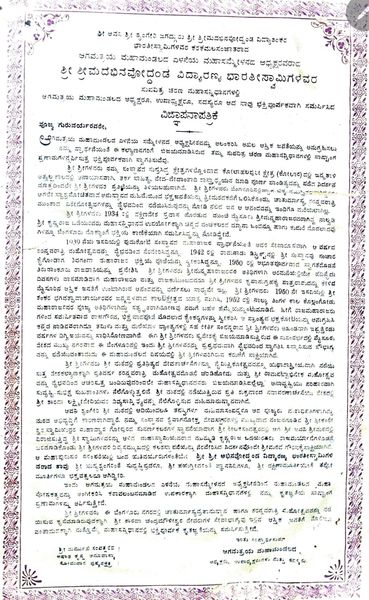
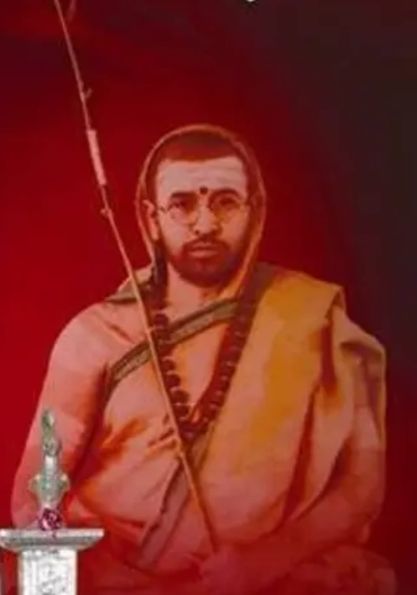
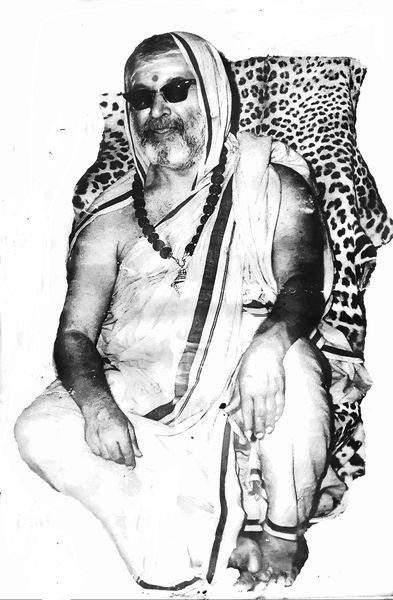
Evidence for enduring cordial relationship: Sri Hariharapura Matha And Sri Kanchi Kamakoti Peetha (1923)
Sri Swayamprakasa Ramananda Saraswathi Swami of Sri Hariharpura Matha Conveys Inability to Attend Tatanka Prathishta Festival at Jambukeswaram & Sending Delegation from Sri Hariharpura Matha.
This correspondence, dated 18, April 1923, exemplifies the enduring and amicable bond between these two advaitic institutions, which has persisted for over a century.
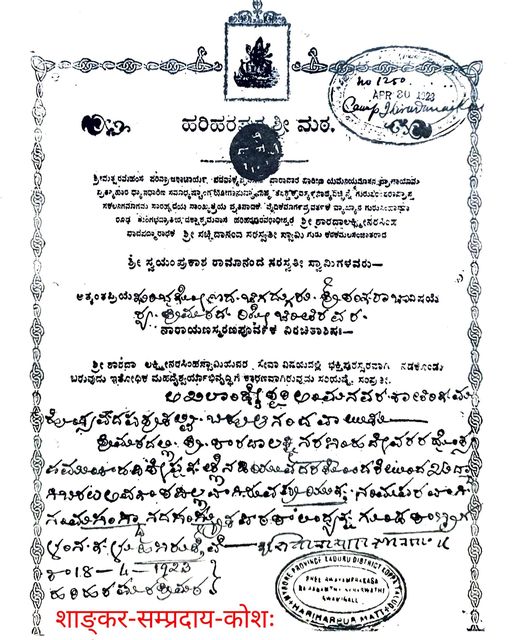
The Age of Sankara – Released on the occasion of the National Seminar on “Age of Sankara” held on 20th January, 2003 in Mumbai – Published by Veda Sastra Pandita Raksha Sabha, Sion(East), Mumbai.
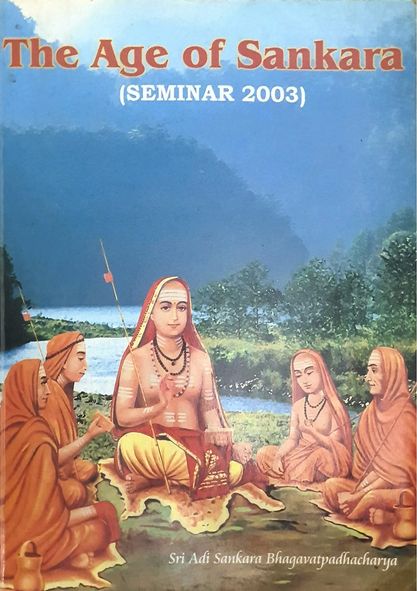
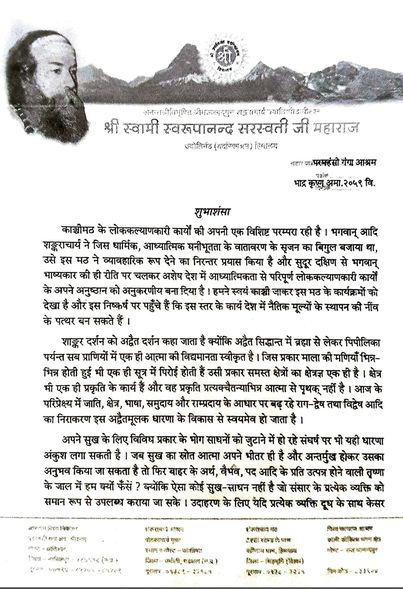
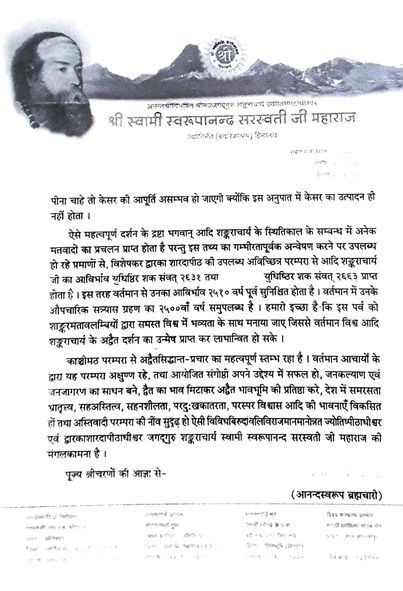
Question: Are Tungabhadra (Kudali) Sringeri and Rameswaram (Rama-Kshetram) two different locations or Are they referring to the same place?
Answer:
“He (Sri Sankaracharya), retired to the banks of Tungabhadra and fixed His camp at Rameswara Tirtha.” (A History of South India-Sri K. A. N. Sastri)
This would mean that Tungabhadra Sringeri and Rameswara kshetra are identical places.
श्रीशंकराचार्य व त्यांचा संप्रदाय. लेखक श्रीयुत महादेव राजाराम बोडस, सन १९२३. शके १८४५
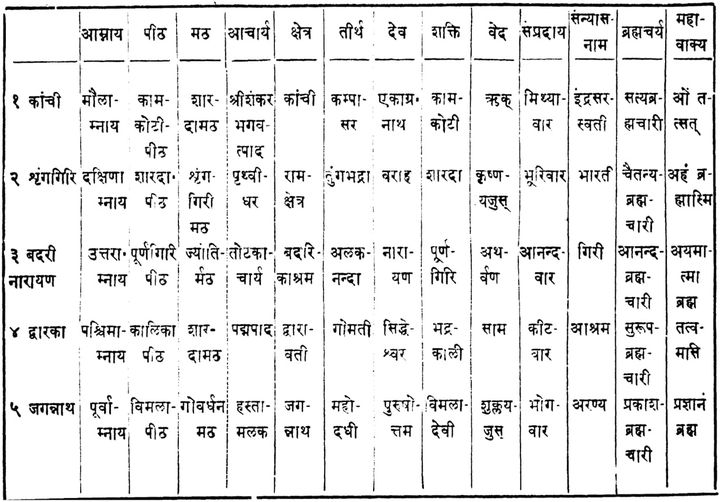
Sarvajna Peetharohana of Sri Sankaracharya at Kanchi
Sri Sankaracharya’s ascent to the Sarvajnapeetha (The Throne of Omniscience) at Kanchipuram, in South India holds immense historical importance.
This significant event is documented in various texts such as Cidvilasa’s Sankaravijaya Vilasa, Govindanantha’s Sankaracharya Charita, and Rajachudamani Dikshita’s Sankarabhyudaya.
Cidvilasa, a devoted disciple of the Tunga Sringeri matha, pays utmost reverence to Bhagavatpada’s Sarvajnapeetharohana at Kanchipuram in his biography.
As a staunch follower of the Tunga Sringeri matha, Cidvilasa’s account takes on a special significance, as he brings his deep understanding and spiritual connection to the narrative. Through the eloquence of sixteen carefully crafted verses, Cidvilasa masterfully paints a vivid picture of Sankaracharya’s ascent to the Sarvajnapeetha at the Kanchi kshetra.
Cidvilasa’s portrayal of Sri Sankaracharya’s Sarvajnapeetharohanam at Kanchipuram, in South India, carries a sense of authenticity and serves as a testament to his unwavering faith in the event’s profound significance.
